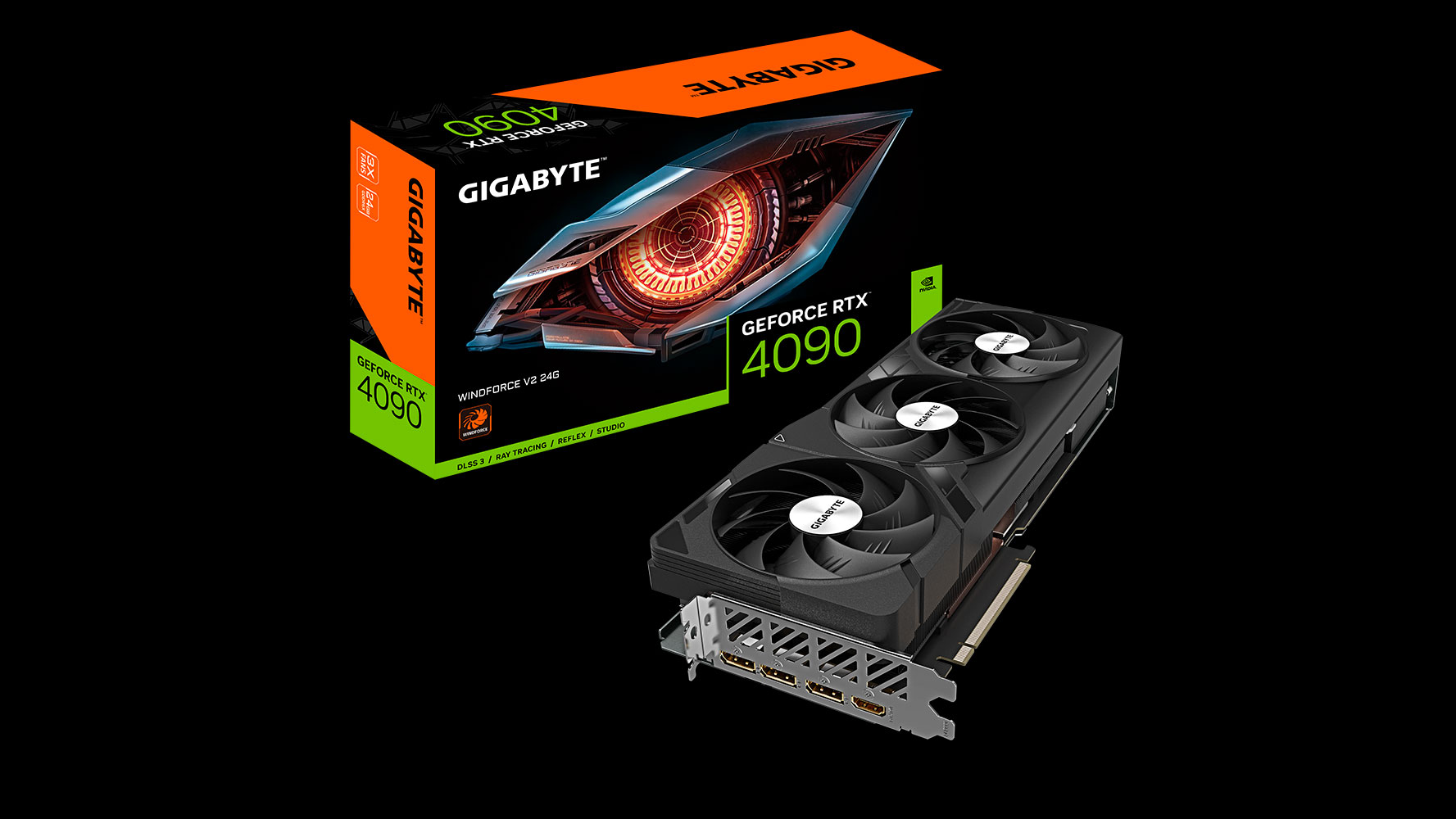
Gigabyte (via Twitter user Vectral) has quietly revised the brand's GeForce RTX 4090 WindForce 24G graphics card. The V2 model features a more compact design, with the 16-pin power connector transplanted to the rear of the graphics card instead of the side placement.
The manufacturer has revamped the GeForce RTX 4090 WindForce 24G's cooler. It still features the WindForce cooling system, comprised of a large copper plate, nine composite copper heat pipes, and three 100 mm cooling fans. While the aesthetics are different, what is more notable is that Gigabyte optimized the design of the cooler, making it significantly more compact.
Gigabyte didn't reduce in the graphics card's length, though. The GeForce RTX 4090 WindForce 24G and GeForce RTX 4090 WindForce V2 24G are still 13 inches (331mm) long. However, the latter isn't as wide or tall as the regular one. With the GeForce RTX 4090 WindForce V2 24G, Gigabyte lowered the width from 5.9 inches (150mm) to 5.4 inches (136mm), representing a 9% reduction.
Like many custom GeForce RTX 4090 models that aren't liquid-cooled, the GeForce RTX 4090 WindForce 24G features a triple-slot design. With V2, however, Gigabyte could trim the graphics card down to a 2.5-slot design. That means dropping the height from 2.8 inches (70mm) down to 2.2 inches (55.5mm), which resulted in the V2 being approximately 21% shorter.
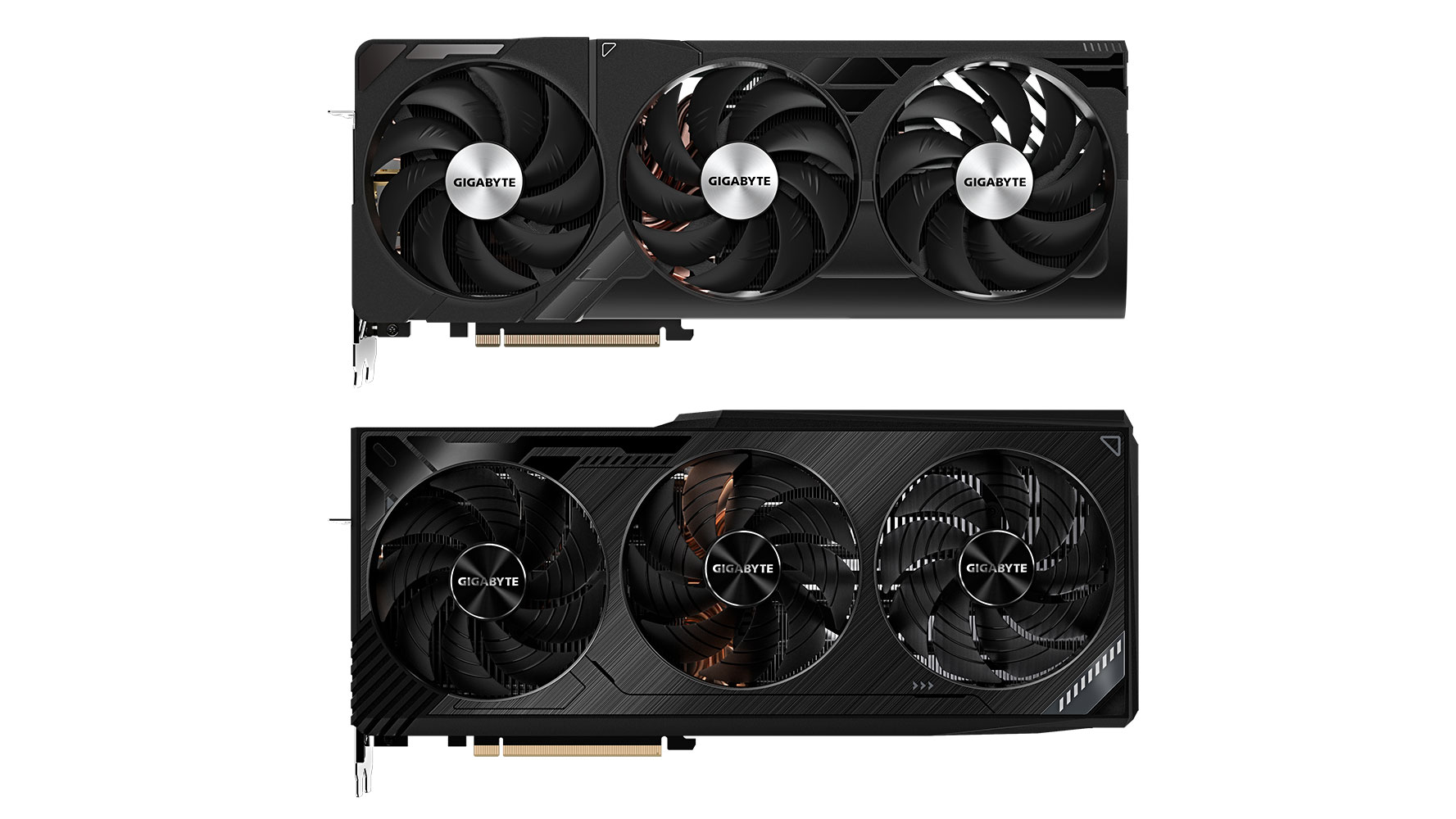
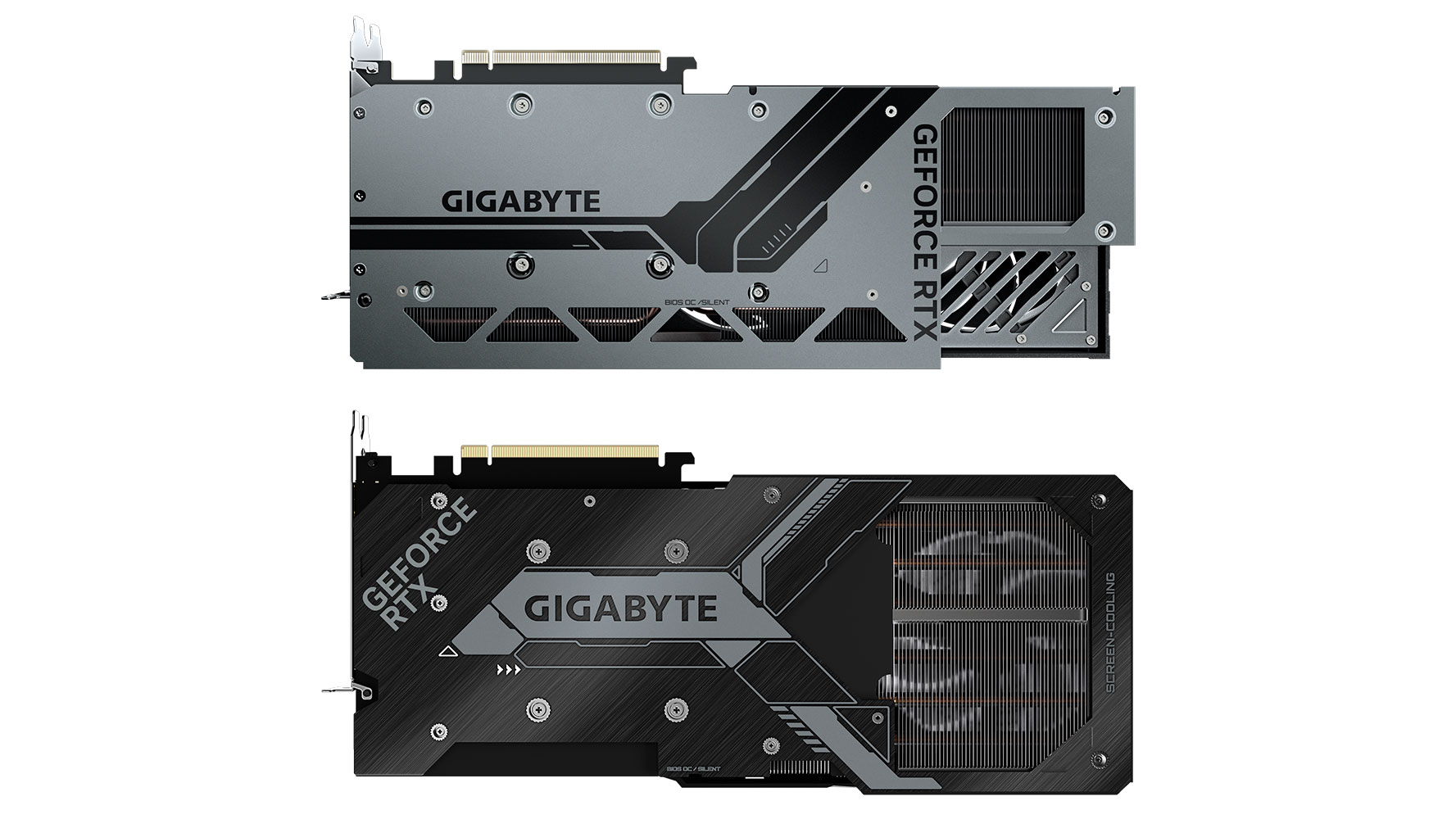
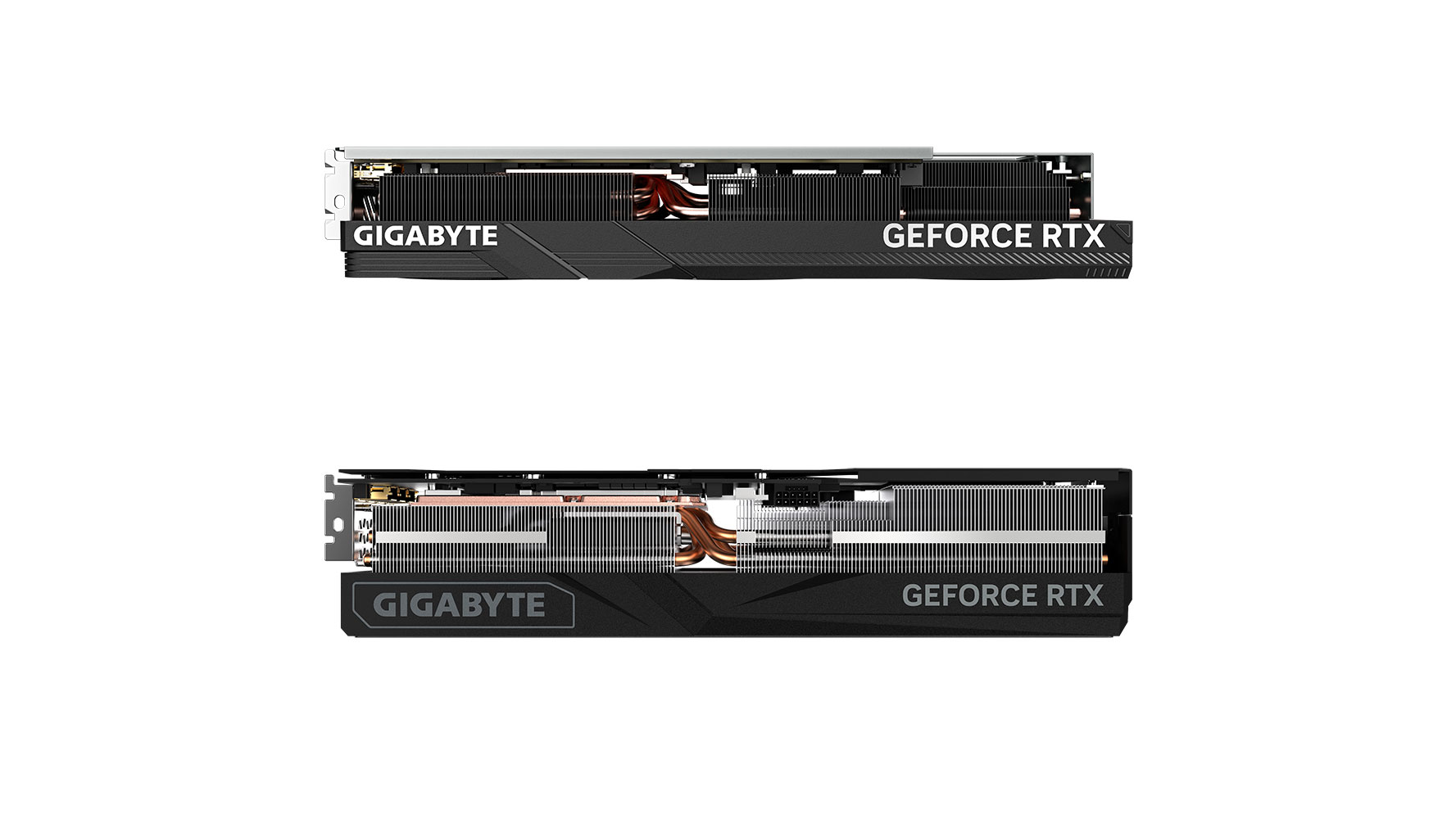
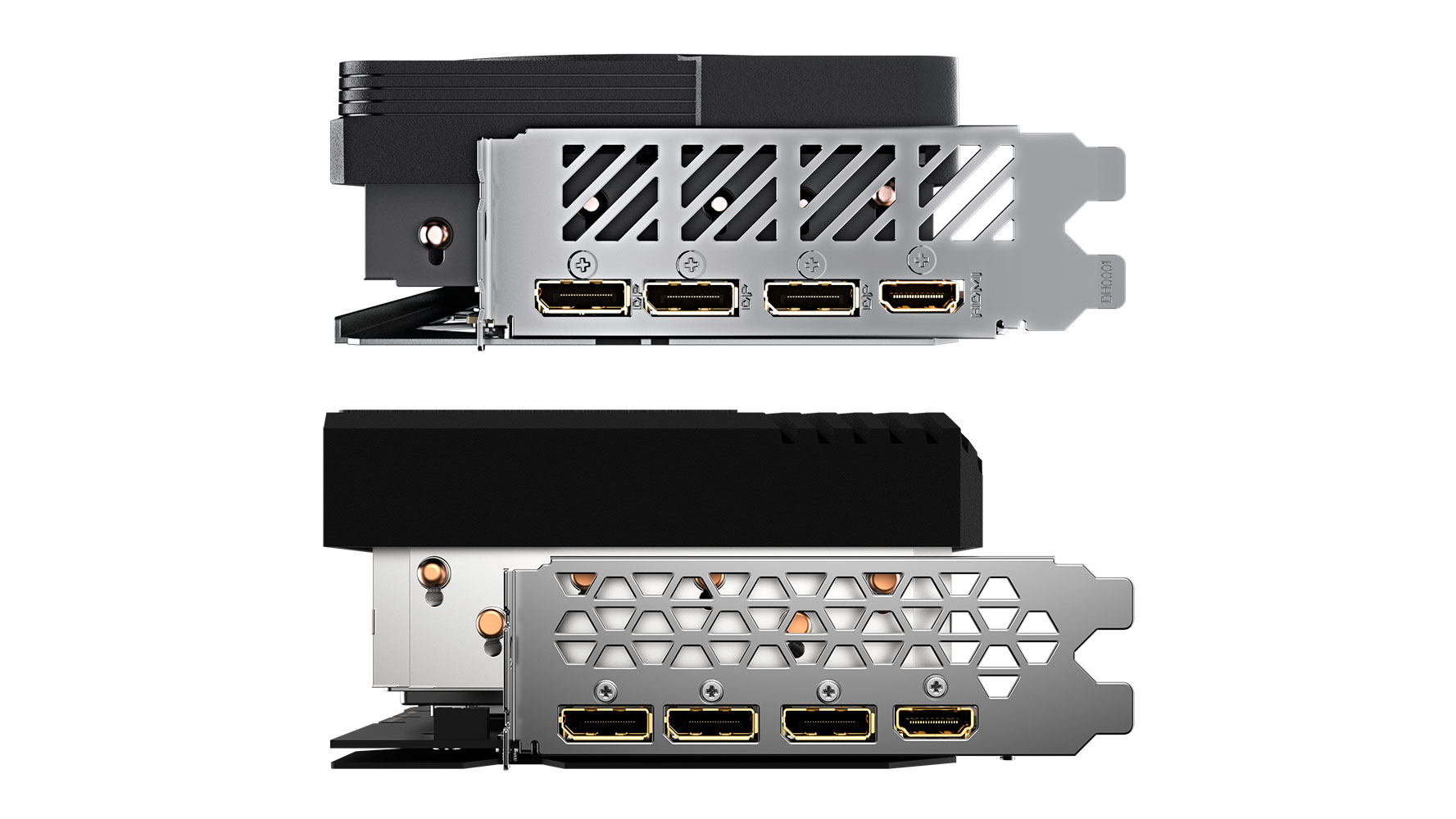
One of the concerns with the original model has to do with the structural integrity of the graphics card. While it was a triple-slot design, the GeForce RTX 4090 WindForce only had two tabs to secure it to the case. As a result, although the graphics card has a metal backplate to provide additional structural support, there was always the possibility of sagging.
On the other hand, the GeForce RTX 4090 WindForce V2 24G supports and comes with Gigabyte's anti-sag bracket. Unlike other holders or braces that basically have you put a stick or a piece of tempered glass under the graphics card, the anti-sag bracket from Gigabyte lets you fasten the graphics card to the motherboard standoffs using the two screws on the lower right corner of the motherboard. Obviously, there are specific requirements, such as the motherboard's design, clearance space, and the position of the primary PCIe expansion slot.
The most noteworthy change on the GeForce RTX 4090 WindForce V2 24G is Gigabyte's decision to place the 16-pin power connector on the rear of the graphics card. Not many vendors do that on consumer graphics cards. When EVGA was still in the graphics card business, the manufacturer was fond of placing the power connectors on the back of the graphics card, like on some of the brand's custom GeForce RTX 3090 Ti models. Many felt that having the power connectors on the back of the graphics card is easier to maneuver the cables since there is generally more clearance space in that area in comparison to the little space between the graphics card and the side panel. Given the fragility of the 16-pin power connector, users must be careful when bending it.
The different placement of the 16-pin power connector implies that the GeForce RTX 4090 WindForce V2 24G may potentially be using a different PCB design Than the original. Nonetheless, the graphics card still features the same 2,520 MHz core clock as the first revision; therefore, Gigabyte didn't touch the specifications. it certainly makes you think whether the triple-cooler was necessary in the first place.
It's unknown when the GeForce RTX 4090 WindForce V2 24G will be available or if it'll carry a premium over the regular model. Unfortunately, we haven't found the new revision at any retailers.







